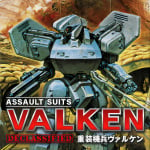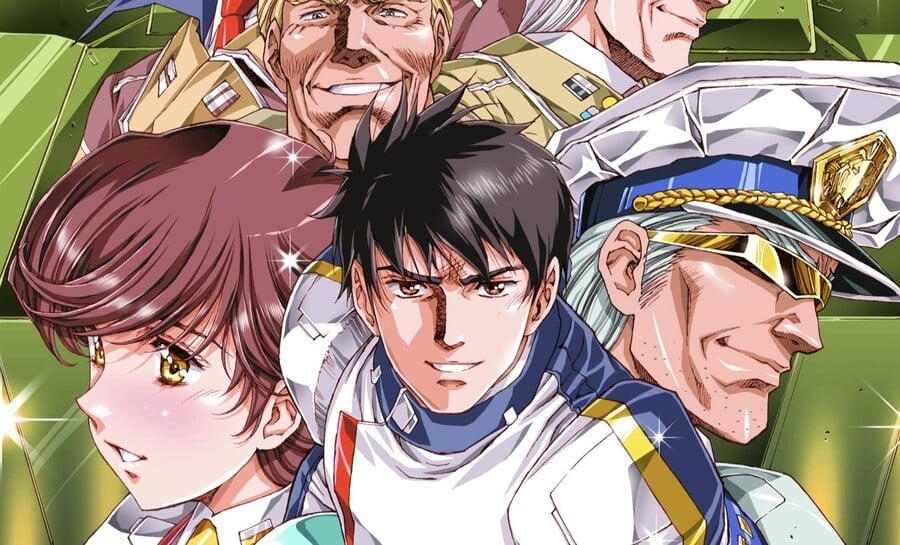
"I did not think many people would be interested in an article about Masaya," says Masayuki Suzuki as our group eats at a local tonkatsu restaurant. Suzuki is a veteran of NCS / Masaya, a powerhouse developer and publisher which helped define the 16-bit era; he personally created the Langrisser strategy series, localised as Warsong on Mega Drive, and was involved in numerous others. Seated next to him is former colleague and long-time friend Satoshi Nakai, another Masaya stalwart whose portfolio is even more prominent. Nakai mutters in agreement with Suzuki while enjoying the deep-fried cutlets, surprised that anyone outside of Japan is even aware of Masaya. "Personally, I've never really been aware of the influence of my own work," he says humbly, "After all, it was 30 years ago."
Also seated are Joseph Redon of the Japanese Game Preservation Society, who has brought several boxes of games and magazines, seemingly a copy of every game the two gentlemen worked on; Nico Datiche, a professional photographer who will be documenting the day; and your author, who would end up recording 4 hours and 22 minutes worth of interviews. For you see, contrary to what Suzuki thought, there are many people interested in their games, and we would be spending the entire day examining them. Of particular focus was the various mecha games they both worked on – including the legendary Assault Suits Valken on Super Famicom, or Cybernator as it was known in the West.
"Suzuki-san is my friend, and he definitely knows plenty about NCS," says Nakai excitedly after we describe our intentions. "So it's good to interview us together. I think we'll be able to correct each other if we misremember something, and help fill in the blanks. Suzuki-san would be the main person to ask about Assault Suit Leynos on Mega Drive [Target Earth in the West], while I'd just be an extra. From the perspective of leading up to Valken, it was a good idea interviewing both of us!"
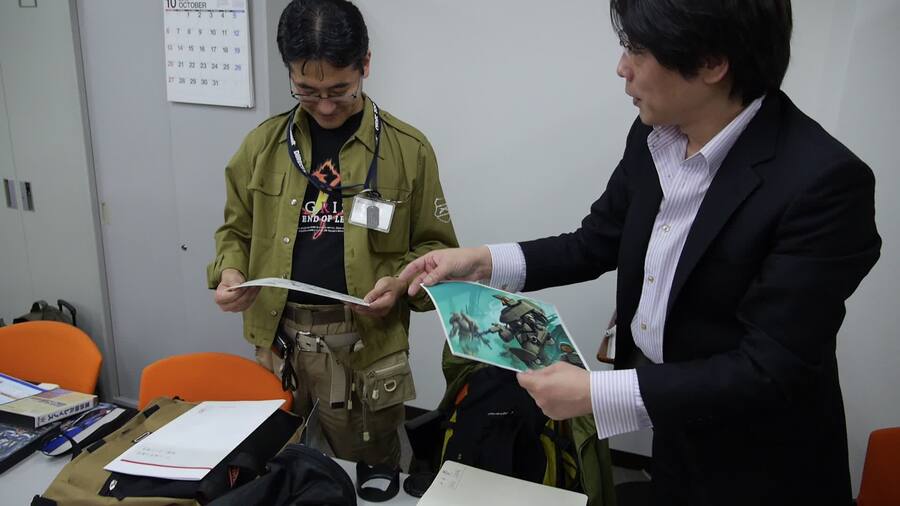
The two interviewees make an interesting pairing: Suzuki in his army-style shirt and cargo trousers, with belted satchel, revealing an enthusiasm for all things military – perfectly suiting the creator of Langrisser (Nakai describes him as a huge military otaku). The fact he's wearing a Langrisser t-shirt is the icing on top. Nakai, meanwhile, is wearing a dapper suit so well cut, and speaking with such mannered eloquence he gives the impression of a Japanese James Bond. Together they reminisce, crack jokes, interject, and finish each other's thoughts, with a rapid wit that's later difficult to transcribe. This is important because, even decades later, you can still clearly sense the energy and camaraderie that would have filled the office when they were making games together.
We've already covered the series convoluted family tree, but just to recap briefly: the company created two games: Hisou Kihei X-Serd on PC Engine, and Assault Suit Leynos / Target Earth on Mega Drive. "Originally," says Suzuki, taking a deep breath as he's about to explain how X-Serd and Leynos are related, "the idea was to do a huge project encompassing a strategy version and an action version released at the same time, with a crossover story between the two titles. So you would have an action game (Leynos) and a strategy game (X-Serd) set in the same universe, released on the Mega Drive and the PC Engine, respectively. But because of various circumstances, the games diverged into their own universes."
Leynos was released in 1990. Suzuki handled the in-game graphics, design, and also the story – later reusing his character Rance Culzus / Lance Kalzas in Langrisser. Nakai's involvement was less pronounced. "For Leynos, a more experienced artist, my senpai, drew the in-game pixel art. My responsibility was using it as a basis for redesigning and illustrating the robot for promotional material. I drew the package and manual art with Liquitex. I think CG illustrations were still rare in this era."
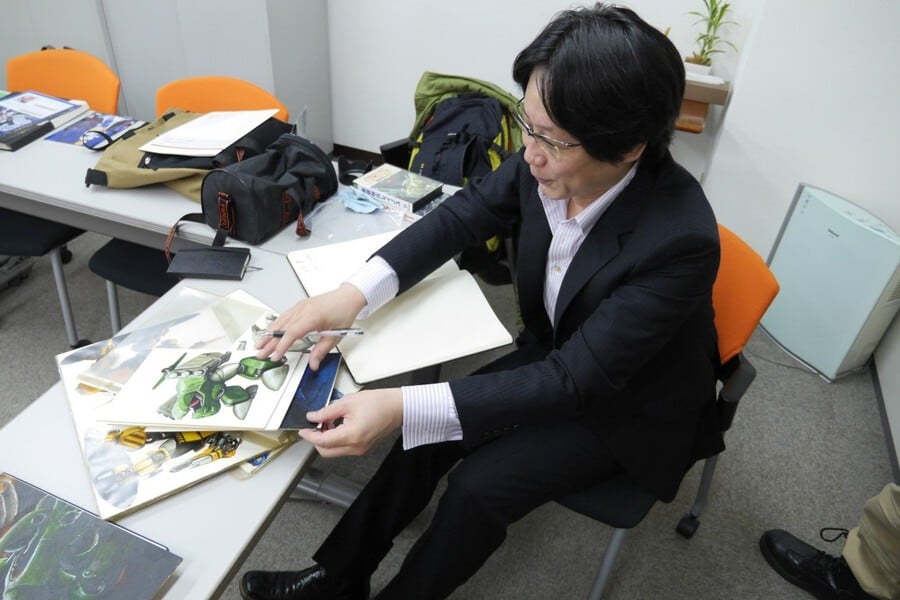
After this, Nakai would create Gynoug / Wings of Wor, released on Mega Drive in 1991, followed by Valken / Cybernator, released in December 1992 on Super Famicom, and localised for Super NES the year after. We brought detailed lists of every game both gentlemen worked on.
"Your database is amazing," says Nakai, looking over the print-outs. "Before I started doing games, I was a waiter for a long time. I had always liked drawing, so started looking around for art-related work, and eventually found some doing art for computer games." He then recites his portfolio, using not the Japanese names, but – impressively – the English ones. "I worked on the following at NCS: Target Earth, Wings of Wor, and Cybernator. My involvement with NCS was mostly concentrated in those projects. I also did some other, smaller work with them, but it's been over 30 years, and my memory is a little fuzzy!"
It's worth casting one's mind back 30 years to fully appreciate the context of Valken's 1992 release. The Super Famicom had launched roughly two years prior in Japan, November 1990, with US and UK launches following in August 1991 and April 1992 respectively. Whatever region you lived in, 1992 was a bumper year for games, with Mortal Kombat, Sonic the Hedgehog 2, Super Mario Kart, plus the home port of Street Fighter II, to name just four. What a time to be alive! Even though the localisation wouldn't officially hit shelves until 1993, Cybernator still actually managed to make it onto DieHard GameFan's Golden Megawards for 1992.
"This is a game that I did pretty much by myself," says Nakai proudly, adding, "but I'm grateful to the thoughtful friend who drew, among other things, the background for the final stage. I was responsible for the mecha design, backgrounds, and overall world view – almost all imagery."
And what imagery! Valken portrays a futuristic world where hulking bipedal robots are the norm and where nations wage war for resources, with the ever-present threat of mass destruction looming. The mechanical designs were exceptional – glance around the concept art shown here, and you'll see how individual parts were designed in a modular fashion, conveying a feeling of pseudo-realism.
Controlling your hulking "assault suit" felt weighted, with every jump and burst of the thrusters feeling just as one would imagine it should. Bullets left visible damage in the surroundings while the brief cinematic cut-scenes were accompanied by animated portraits. It was all wrapped up in a (for the time) complex and dark story of nationalism and political intrigue. It's a pity the English localisation stripped out the portraits and censored the controversial 'suicide' ending. Even in its neutered state, though, the action was phenomenal. Critics were unanimous in their praise; Super Play's reviewers gave it 90% and 91%, GameFan's reviewers gave it 96% and 99%, with the plethora of other magazines doing similar.
"It was also my idea to destroy the floor and other objects by shooting them with the machine gun," adds Nakai. "I remember the coder being annoyed with me, saying, 'That's a pain to code!' It goes back to Leynos. If a bullet hits a gasoline tank, it explodes like you would expect. And if a bullet hits a cannon, the cannon also becomes damaged or destroyed, but not the wall. That seemed odd to me. I thought, if that's the case, then why not also shoot out the floor? I remember the programmer hating the idea. But I suggested making minor things destructible in every stage, and we talked about how that had never been done before."
Nakai raises an interesting point here, showing just one of the numerous improvements made over Valken's predecessor. Interior stages in Leynos feature wall cannons that you can destroy, but doing so leaves the walls entirely unscathed, as if the cannons never existed – it's kind of jarring, and so the ability to damage walls in Valken makes sense.
Before we can ask another question, the two interviewees are on a roll, with Nakai proclaiming, "Did you know that Suzuki-san's works, Leynos and Valken, are actually connected? After the ending of Valken, if you just let the game run by itself for a few minutes, a short conversation appears. Maybe all you experts already know about this?"
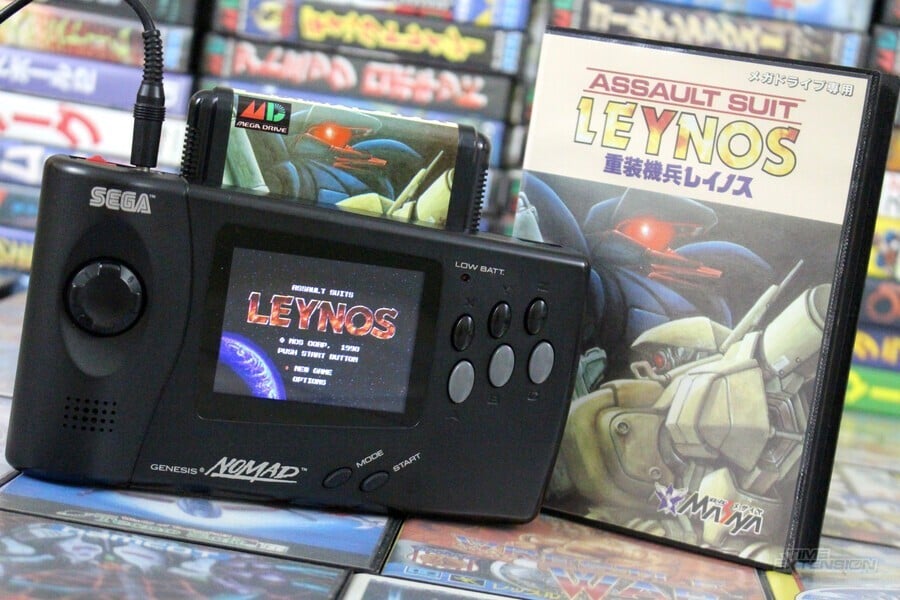
Although removed during the localisation of Cybernator, in Valken, the following message is repeated in segments: "This is the Outer Space Expeditionary Party. Please Respond." This directly ties into the Leynos ending, where the antagonist says they sent a message which was ignored. Meaning Valken is actually the story prequel, and its ending – with the above message – leads directly to the events of Leynos.
Suzuki then interjects with his own trivia. "Nakai-san has already revealed the Leynos / Valken secret... but here's another: in Valken, there were several stages that went unused over the course of development, with just the graphics completed for some of them. Several photos of these lost stages were printed in a strategy guide published at the time."
Wait, unused stages? Cut material? We had to know more, so we pressed this question hard. "So many things got cut that if you got me to start listing them, you'd end up having an entire extra volume of 'untold history' on your hands!" laughs Nakai.
We insist they share as many details as they can recall, and Nakai obliges. "There was one idea we had to cut from Valken. It was called the 'X-System'. Looking at it now, that sounds pretty lame... Originally there were two starting points: The Moon and the Earth. And two ending points, also on the Moon and the Earth. The Atmosphere stage was between them, so the stages were arranged in an X pattern, <begins gesturing with hands> with players able to proceed through Earth-Atmosphere-Space, or Space-Atmosphere-Earth order. Of course, players would also have been able to finish by going in an Earth~Earth and Space~Space order."
It's at this point Nakai pulls out a page from his concept art, showing what looks like a cinematic storyboard of two assault suits above some sort of office or cockpit. He points to the paper's edge. There, in the corner of the margin, are small doodles of this scrapped X-System, possibly the only surviving record of the idea. It shows two different implementations, one resembling the map system from Star Fox or Darius, with a linear route of semi-branching paths, and then next to it the X-shaped idea as described by Nakai, with two starting and endpoints, and a central shared level regardless of the chosen path.
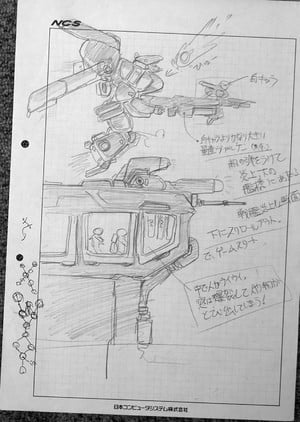
Nakai then revealed some of the locations that never made it. "Valken has a stage where you shoot down shuttles, and a stage where a space colony crashes, and we also made a moon base stage that didn't make it into the game. A lack of time was the only reason we couldn't pull off these ideas. We made the game in a timeframe that would be unthinkable today, and if we'd had a year and a half to make the game, I think we could have done it. Now that I think about it, there was one more stage that didn't make it into the game, the Harbour stage. We even designed a submarine-style boss for it."
This mentioning of schedules surprises us, since Nakai's portfolio lists Gynoug as launching in January 1991, him then doing the packaging art for Head Buster on Game Gear, which was released in March 1991, followed by Valken in December 1992. The assumption was that Valken had a generous development time. Exactly how long did they have on it?
"Back in those days, we'd only have between six months and a year to make a game," he explains. "So there were always mountains of ideas we wanted to include but couldn't. Even as we were making the games, new ideas never stopped flowing. Like, whenever a programmer would come up with something, they'd get all excited and say, 'Look what I managed to get working – we should use this!' But then admit, 'We don't have time now, but if there's a Valken 2, let's put it in that!' When we were staying overnight at work, we'd end up drinking until morning at a bar in Nishi-Azabu, talking about those ideas. Sometimes they found homes in other projects. Every day was a blur of 'This is fun!' – 'We need more time!' – 'I'm tired!' – 'I had another idea!' It was such a wonderful time. I'm so grateful I was able to be a part of that."
Although created during a golden period in gaming history, with smaller teams and less oversight than today, it cannot be overstated how hard developers worked to bring you those little plastic cartridges. The story of drinking until morning prompted Suzuki to share another anecdote. "We would often sleep at the company working overnight. But sometimes, the president would stop in, already drunk, and drag us off to a bar! <laughs – to SN> And you were furious! You would talk back to the president, saying, 'What are you doing? We're trying to get work done!'"
"On cold nights," adds Nakai, "we would spread out cardboard, flat on the floor, and stuff newspaper into our clothes to stay warm. <everyone laughs>" Suzaki recalls this, too. "We almost looked like homeless people," he adds. "And one time, the building manager got angry with us because we were drying out our sleeping bags in the emergency stairwell."
With those days now long behind them, what about all that cut content? Did anyone save any of it? At one of the Consumer Electronics Shows in America, a prototype of Cybernator was available to play, containing material not found in the retail release. Did either gentleman perhaps keep such an item from during development?
"The unreleased materials from the Masaya era are at a company called Extreme now," explains Suzuki, "which is run by Satou-san, the last president of Masaya and current holder of its copyrights. That may make things difficult. The issue is that in the last few years, they've released a number of model kits from the Leynos and Valken games here in Japan. And the unreleased materials concern this series. The fact that the series still has some market viability could complicate things somewhat."
"My Leynos and Valken designs were released as plastic models and small figurines," elaborates Nakai, revealing that he does indeed still have the lost materials. "I have some old Valken data. Surprisingly, I have more materials on paper than digital data, for games like Valken and Gynoug."

Now was a good opportunity to segue into questions about Metal Warriors, a SNES side-scrolling mecha action game developed by LucasArts. Given that both it and Cybernator were published by Konami in America, a lot of fans thought the two were directly related. We actually also interviewed Mike Ebert, who was level designer and artist on Metal Warriors. He described the Cybernator influence and also spoke about the early build he'd played.
"We were very aware of Cybernator," admits Ebert. "I had played an early build of Cybernator at a CES, and it was so cool – it was really different compared to the shipped game. Then they shipped the game and I really didn't like it as much. Blaster Master definitely inspired the gameplay more, but we knew we had to have the controls feel as good as Cybernator, since they felt awesome. We spent a lot of time getting the controls right. We borrowed heavily on the controls from Cybernator, but we knew they had done about the best job possible, so why not leverage that work."
"I am familiar with Metal Warriors," says Nakai, when we show him Ebert's answers. "It was the one Konami published for the Western market? I recently watched it on YouTube for the first time in a long time, and the resemblance is even stronger than I had remembered. I'm happy that I was able to make something that someone considered to be worth imitating. After all, copying all sorts of games and movies is how I got started, too! I know we made Valken over 30 years ago, but I'm still quite proud of it."
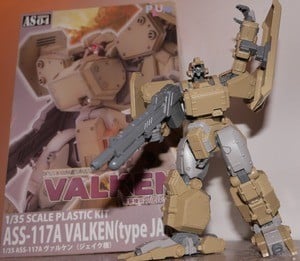
Ultimately Nakai would also end up influencing himself when he finally made the 'Valken 2' that he alluded to in an earlier answer – but it wasn't the Japan-only, TamTam-developed PlayStation Assault Suits Valken 2 from 1999, it was the 1996 Super Famicom Front Mission: Gun Hazard. "It was by Omiya Soft," he explains. "Basically, we wanted to do a sequel to Valken, on a larger scale. And we thought that some role-playing elements were needed to extend the playtime. We discussed this from the beginning. And personally, I wanted to design something bigger, something more amazing that I wasn't able to do in Valken, like larger enemy characters. More generally, I wanted to create the sense of destroying things on a larger scale."
Suzuki and Nakai would discuss many of their other games that day too, but undoubtedly Valken is one that will resonate the strongest with readers. We again assured them that fans outside of Japan were interested in their games. There's no better evidence of this than the fact Leynos was remade in 2016, and just recently, Valken received an upgraded port for Switch. It features a new English localisation, and, this time, they kept the portraits.
Before parting at the end, Nakai handed this article's author a plastic bag. Inside was a brand new 1/35 scale Valken model kit – a gift to remember the day. The little figure was assembled, and it stood vigil, watching as the interview was later transcribed. May the legacy of Assault Suits live on!


